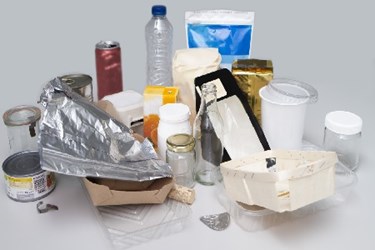Research Shows Healthy Growth For Nano-Enabled Food And Beverage Packaging Market
By Isaac Fletcher, contributing writer, Food Online

Due to nanoparticles’ ability to enable the creation of superior packaging and more-functional food products, the market for nano-enabled products is expected to demonstrate strong growth through 2018
A recent report from TechNavio, Global Nano-enabled Food and Beverage Packaging Market 2014-2018, predicts that the global market for nano-enabled products is poised to grow at a 10.48 percent CAGR through 2018. In order to calculate the market size, the report analyzes the revenue generated through sales of nano-enabled food- and beverage-packaging solutions by the various vendors in the market. The key markets for nano-enabled products are the America, the Asia-Pacific (APAC) region, and the European/Middle East/Africa (EMEA) region.
Active Packaging: Locking In Freshness
Nano-enabled, food technologies can be broken down into three distinct types: active, intelligent, and controlled release. These products make use of nano-engineered materials to enhance food safety and quality. The various enhancements made possible by these materials are solutions such as nanocoatings and nanocomposite-based packaging films.
The increase in growth for the nano-enabled product market is largely due to a rising demand in the beverage industry. Nano-enabled packaging is coming into high demand for use with both carbonated and noncarbonated beverages. In packaging, nanoparticles provide strength, prevent growth of unwanted microbes, and control how much air can get into a product. Additionally, one of the most-prominent trends throughout the market is a growing focus on developing bio-nanocomposite-based packaging products to help accommodate the increasing popularity of bio-materials in packaging.
White Paper: The Impact Of Permeation On Shelf Life And Packaging
Although growth prospects are promising, the market faces some hurdles. Of these, the most widespread is likely an increased concern over the safety of nano-enabled products. There is the potential for nanomaterials to enter into food and beverages, thereby posing health risks. Research indicates that nanoparticles could cause damage to intestinal cells by altering their structure and hindering their ability to properly digest food. Furthermore, nanoparticles that are not digested may potentially make their way back into surface water, which could pose health risks for the aquatic life. However, with continued advancement and research into nano-enabled packaging, concerns over safety are expected to diminish.
